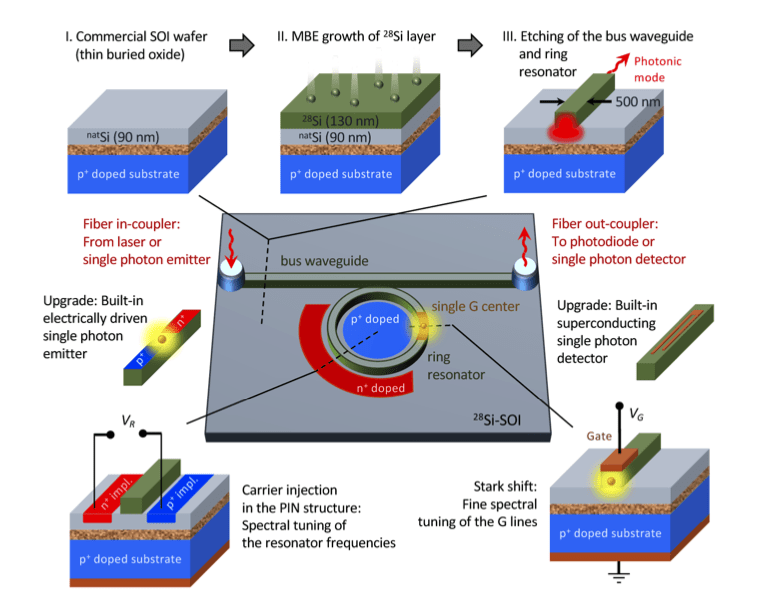
Physicists from the Helmholtz-Zentrum Dresden-Rossendorf (HZDR) and TU Dresden have designed a silicon-based light source to generate single photons that propagate well in glass fibers.
Quantum technology relies on the ability to control the behavior of quantum particles as precisely as possible, for example by locking individual atoms in magnetic traps or by sending individual photon through glass fibers.
This requires light sources that deliver single photons. Such systems already exist, especially based on diamonds, but they have flaws. They can only generate photons at frequencies that are not suitable for fiber optic transmission.
To make a material generate the infrared photons required for fiber optic communication, the team subjected it to a special treatment, selectively shooting carbon into the silicon with an accelerator at the HZDR Ion Beam Center. This created what is called G-centers in the material — two adjacent carbon atoms coupled to a silicon atom forming a sort of artificial atom.
When radiated with red laser light, this artificial atom emits the desired infrared photons at a wavelength of 1.3 micrometers, a frequency excellently suited for fiber optic transmission. The prototype can produce 100,000 single photons per second. However, the system only works in extremely cold conditions, at a temperature of minus 268 degrees Celsius. (ScienceDaily)
The paper has been published in Optics Express.
